Answers Inc. – A brief history of U-M’s Space Physics Research Laboratory
For 75 years, SPRL has sent instruments skyward to help us better understand Earth, space, our sun and more.
Written by:
Questions? Those are easy.
Even our earliest ancestors looked to the sky and stars above and formulated questions, trying to figure out what it all is and how it all works.
But answering those questions, often about phenomena taking place thousands to millions of miles away? That’s the trick.
Since the aftermath of World War II, it’s been the specialty of the University of Michigan’s Space Physics Research Laboratory (SPRL). Instruments dreamt up and developed here by researchers and students have already reached areas of the solar system that human beings won’t for years, decades or even longer.
Want to know how the makeup of Earth’s upper atmosphere impacts aircraft flight? Need an understanding of how hurricanes grow in destructive power and move as they near shore? Want to see how the sun controls things inside the heliosphere and grasp how it threatens Earth?
Designed to function in the harshest known environments, SPRL instruments are answering these questions and an array of others about our universe from the confines of its labs and offices within U-M’s Climate and Space Research Building in Ann Arbor.
2021 marks the 75th anniversary of the lab’s creation, making it older than NASA itself. And, in that span, it has helped produce some of the most important instruments in the history of space exploration, shedding light on questions that once seemed beyond our understanding. SPRL gadgets currently orbit, or have orbited, Earth, Mercury, Venus, Mars, Saturn and some of its moons, and the sun.
Behind its non-descript doors on the first floor of Climate and Space’s North Campus building, SPRL offers an increasingly rare kind of environment, one that benefits from the input of faculty researchers, the creative thinking of SPRL’s engineers as well as the students they serve.
“Being situated within the university is ideal,” said Sue Lepri, SPRL’s director and an associate professor of climate and space sciences and engineering. “It’s this great educational experience—everyone is learning. Students that are coming into SPRL are not just designing one little widget on a car or an airplane. They’re designing something that is one-of-a-kind and is going to go to space.”
And the results are undeniable.
Those who have passed through SPRL’s doors over the years have gone on to leadership positions in NASA and its Jet Propulsion Laboratory (JPL) and Goddard Space Flight Center, SpaceX and Blue Origin and positions at major research institutes. Thomas Zurbuchen, a former Michigan Engineering professor and associate dean who is now NASA’s associate administrator for science, is just one example.
“There are so many leaders among SPRL’s graduates. Frankly, it’s astonishing,” said Zurbuchen, who served as Lepri’s Ph.D advisor. That list includes: the thermal lead on the James Webb Space Telescope, the deputy software lead on NASA’s Psyche mission to explore a metal asteroid, the instrument integration lead on the Mars 2020 mission, the lead for SpaceX’s launch operations and the second-in-command in heliophysics at NASA Goddard Space Flight Center.
“The lab is in many ways audacious,” Zurbuchen added. “To really advance knowledge about the solar system and climate science, you need to do more than just analyze data. You need to actually build systems and develop instruments that explore the solar system and monitor our own planet. There are very few university-based labs in the country that can do this and SPRL is one of them.”
This 75th anniversary year marks a new chapter for the lab, with Lepri stepping into the director’s position— the first woman to hold the position.
Before that chapter gets started in earnest, here is a short look back at SPRL’s history and some of its work.
1950s
Setting the scene:
It’s the latter half of the 1940s and the start of the 1950s. A series of booms are underway that appear to have no end in sight—babies, suburban housing and the nation’s economy. Those numbers are soaring for a country still finding its way through the aftermath of World War II.
And it’s unfinished business from the war that helps give SPRL its start. The U.S. government remains keenly interested in technology from the defeated Nazis. In particular, they’re studying the V2 rocket—considered the first long-range guided ballistic missile.
They’re curious about how Earth’s upper atmosphere and how it affects the flight of missiles and rockets like the V2. William Gould Dow, who created SPRL, partners with the U.S. Air Force in 1946 to begin measuring ion and electron temperatures in the upper ionosphere.
The instrument: The dumbbell probe
Technically it’s called a double Langmuir probe, but when you see what U-M engineers came up with in the late 1940s, calling it anything besides a dumbbell just seems wrong.
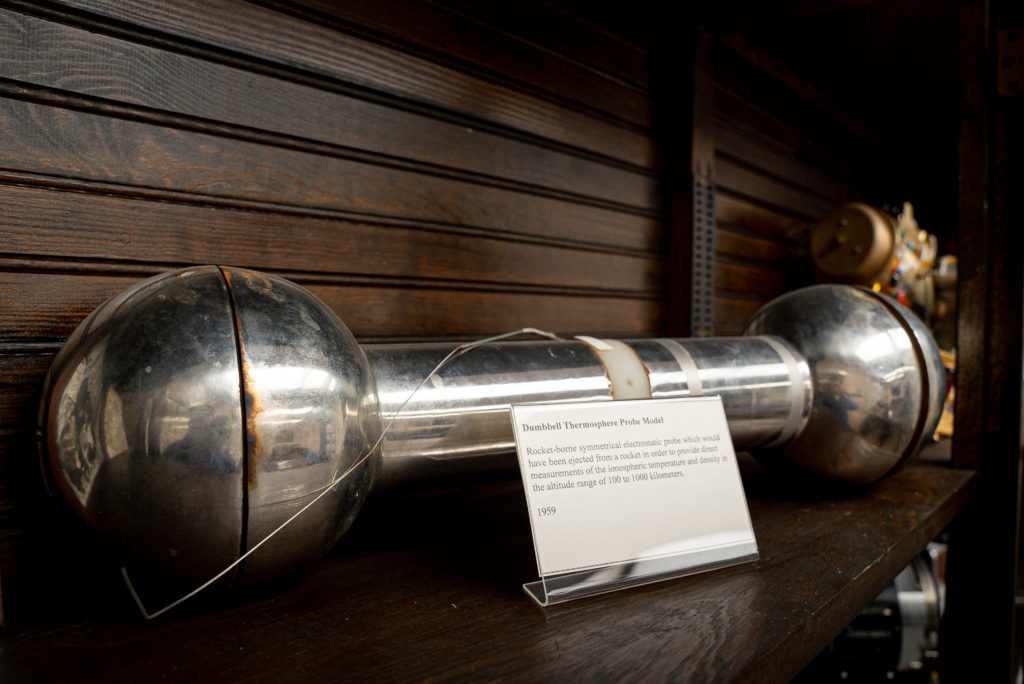
Irving Langmuir created his namesake probe three decades earlier to measure electron temperature and densities in plasmas. But attaching them to the metal body of a rocket interfered with those measurements, so the U-M team came up with their “dumbbell” design.
By physically isolating the sections of the probe, voltage could be applied at one end to attract ions or electrons for measurement, while the other end could do the counting. Researchers at U-M were on hand for suborbital launches carrying the dumbbell probe from White Sands, New Mexico, and, later, Ft. Churchill in Manitoba, Canada, into the atmosphere.
The findings: Research borne out of these early efforts helped improve estimates of the atmosphere’s neutral density, key information about atmospheric drag that helps in planning spacecraft re-entry. The work of Dow, along with Nelson Spencer, Larry Brace, Walt Hoegy and George Carignan, solved problems linked to taking measurements in the upper atmosphere without allowing the onboard performance of communications and control systems to be affected.
What the dumbbell probe showed was quite unexpected and controversial. In fact, it would take several more years of work from the earliest members of SPRL, mostly electrical engineers at the time, to prove the findings were correct.
The dumbbell probe revealed that large percentages of electrons at this altitude had temperatures that were higher than the neutral gas temperature. In the resulting paper, Dow and others wrote: “The probe current showed an extremely rapid rise between 90 and 105 km altitude. The result indicates a positive-ion density about ten times larger than the electron density.”
This better understanding of the upper atmosphere’s makeup helped engineers improve communication with rockets and aircraft, while also leading to better weather forecasting.
1960s
Setting the scene
The 1960s have the U.S. and U.S.S.R. navigating some of the coldest years of their Cold War. Over two weeks in October of 1961, the Cuban Missile Crisis raises tensions to frightening new levels. By the middle of the decade, the U.S. will be officially in the Vietnam War.
The turmoil is creating new pressures for understanding the upper atmosphere and beyond as the Space Race heats up.
In Ann Arbor, SPRL continues to take form, with new researchers from different disciplines helping diversify the group. Andrew Nagy, professor emeritus of climate and space sciences and engineering, joined in 1959.
“It was exciting to be part of something new and growing—exploring things that had never been explored before…,” Nagy said 60 years later. “They were a fairly small operation when I joined, probably no more than a half dozen people. Things started developing very rapidly. By the mid-1960s, it had become a pretty big operation.”
In this decade, SPRL is validating the dumbbell probe’s earlier findings. But it also branches out in new, important directions—namely upward. New instruments allow U-M researchers to characterize the furthest reaches of the upper atmosphere, as high as 205 miles.
The instrument: Thermosphere cylindrical probe
Much like its predecessor, the dumbbell, these probes were designed to take measurements in the upper atmosphere. The thermosphere cylindrical probes were designed to go even higher and collect data more accurately once they were ejected from their rockets mid-flight.
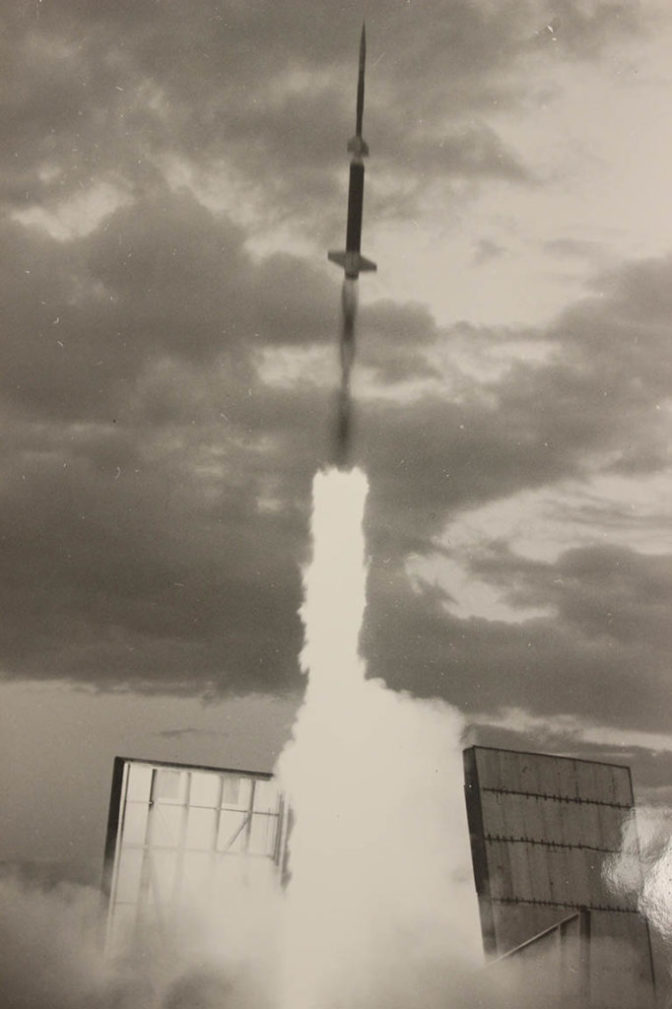
After work in the 1950s utilizing V-2 rockets, the push higher into the skies required new kinds of rockets, and U-M researchers utilized both Aerobee 300 and Nike rockets to get their instruments where they needed to be.
In an attempt to understand how electron temperatures and densities varied in different places around the world, launches took place in separate locations: at Fort Churchill, Manitoba, in Canada, as well as Wallops Island, Virginia.
The findings: In the 1960s, researchers at SPRL were able to verify the accuracy of the earliest findings on the upper atmosphere’s electron temperatures from the dumbbell probe—bolstering the lab’s growing reputation.
“The general opinion at the time was that the temperature in the upper atmosphere was about 1,000 degrees Kelvin,” Nagy said. “And the cylindrical probes indicated temperatures that were around 3,000 degrees Kelvin. So the thought was that there was something wrong with these instruments.
“Of course, it was easy (for them) to blame the instrument.
“For a number of years, people in SPRL were defending the validity of the results. And then people woke up and realized electron temperatures are not the same as the neutral gas temperatures. And through model calculations, we showed that’s the way it should be.”
By solving the temperature question, SPRL’s work helped open the door to broader examinations of daily and seasonal fluctuations in temperatures in the upper atmosphere.
1970s
Setting the scene
The modern environmental movement in the U.S. is picking up steam. Concerns over issues like pollution in the air and water, nuclear power, and pesticides have Americans rethinking their relationship with the planet.
April 22, 1970 marks the first celebration of Earth Day. Roughly two years later, the United Nations hosts the Stockholm Conference, considered the first world gathering on environmental issues.
This increased interest in issues like air pollution underscores the need for ways to sort through and identify the components in the atmosphere. SPRL’s mass spectrometer instrumentation work centers on a device that can measure neutral particles, such as nitrogen gas, in the upper atmosphere. But the lab’s researchers also begin looking further away to understanding the planetary atmospheres of Venus, Mars, Jupiter and Saturn.
The instrument: The quadrupole mass spectrometer
To better understand the pollutants making their way into our air, SPRL researchers, most notably Hasso Niemann, developed a quadrupole mass spectrometer. Four cylindrical metal rods in parallel make up the bulk of the instrument.
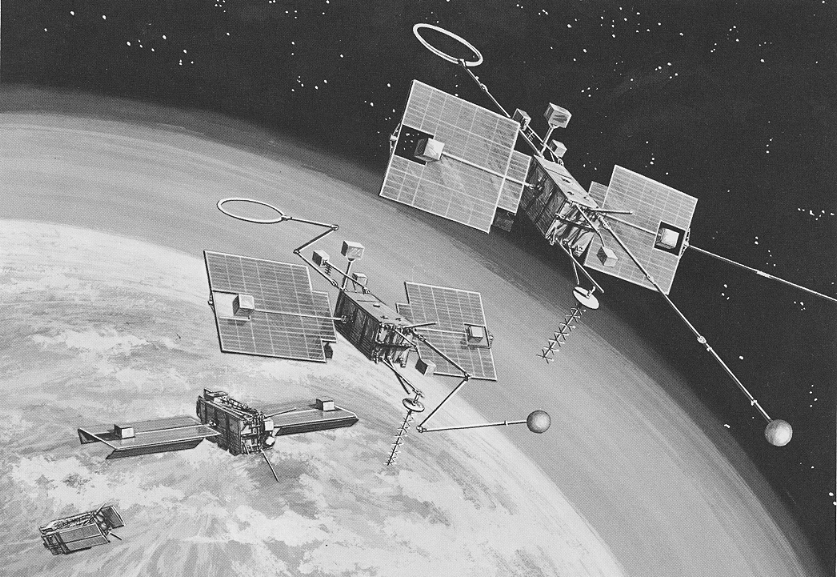
The device’s super power was identifying the components of gases. It accomplished this by suspending molecules in an electromagnetic field. That field is generated when voltage is applied to one pair of the rods. By varying the voltage applied to the rods, different molecules are deflected to the detectors. Those detectors sort and identify molecules by weight, and then count them to determine their density.
“The quadrupole was a bigger, more complex instrument than its predecessor mass spectrometers,” said Patrick McNally, SPRL’s managing director. “It was better suited for measurements on an orbiting satellite. From this vantage point, measurements could be made around the globe at a given altitude. This would show changes over time as the satellite completed many orbits.”
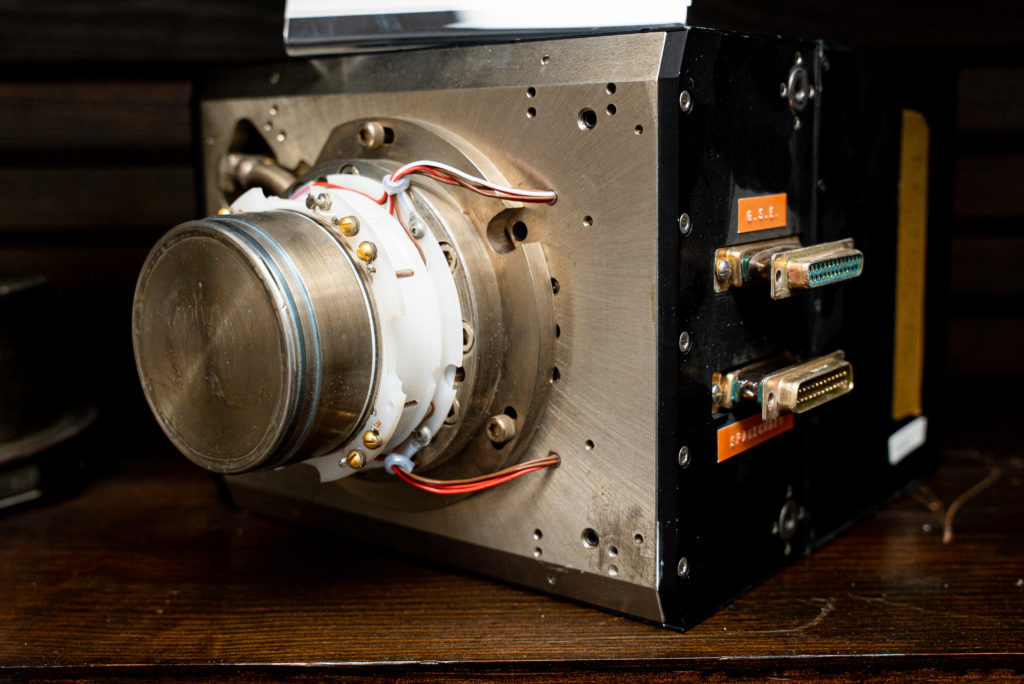
The findings: The quadrupole mass spectrometer’s ability to parse through the components of an unknown gas showed potential for use on planetary discovery missions. In the years following instrument’s success, SPRL engineers worked with NASA Goddard Space Flight Center on new, more compact quadrupole mass spectrometers for atmospheric studies of other planets.
The quadrupole mass spectrometer’s descendants have gone to Jupiter (Galileo Probe NMS), Saturn (Cassini INMS and Huygens Probe GCMS), Mars (SAM on Curiosity, MAVEN), and the Moon (LADEE). Upcoming missions that will utilize SPRL’s mass spectrometer electronics include Dragonfly, heading to the Saturn moon Titan and DAVINCI, slated for Venus.
1980s
Setting the scene
In 1981, NASA launches Space Shuttle Columbia, the first reusable, crewed spacecraft. NASA’s pivot to different modes of transport mirrors what has been happening with SPRL. Researchers at the laboratory are beginning to look at satellites and longer-term studies as the next frontier for their instruments.
James Hansen, a NASA climate scientist, uses the term “climate change” for the first time during testimony before the U.S. Senate in 1988. Again, SPRL’s work in this decade mirrors NASA’s focus on the climate. To understand the factors driving worrisome climate issues, U-M engineers are studying the pollutants in the air and how they are affected by both temperature and wind.
The instruments: The High Resolution Doppler Interferometer (HRDI) and Timed Doppler Interferometer (TIDI)
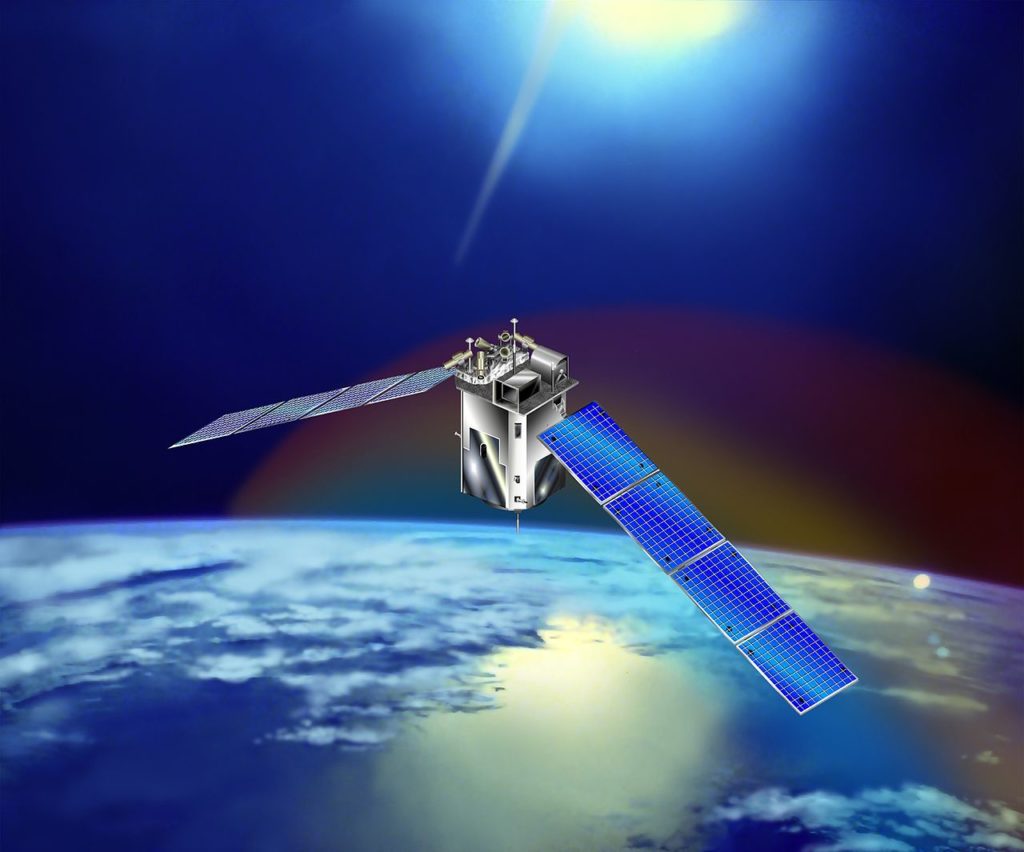
The first interferometers were developed just before the start of the 20th century, harnessing the interference of light waves in order to gather information about components in the air. And the Fabry Perot interferometer was a key jumping off point for SPRL researchers in the 1980s.
Here’s how they work: With two reflective surfaces placed parallel to one another, light is shone into the space between them. When the light hits a reflective surface, it bounces back and forth in the space and an interference pattern is formed, depending on the wavelength of the light and the separation of the plates.
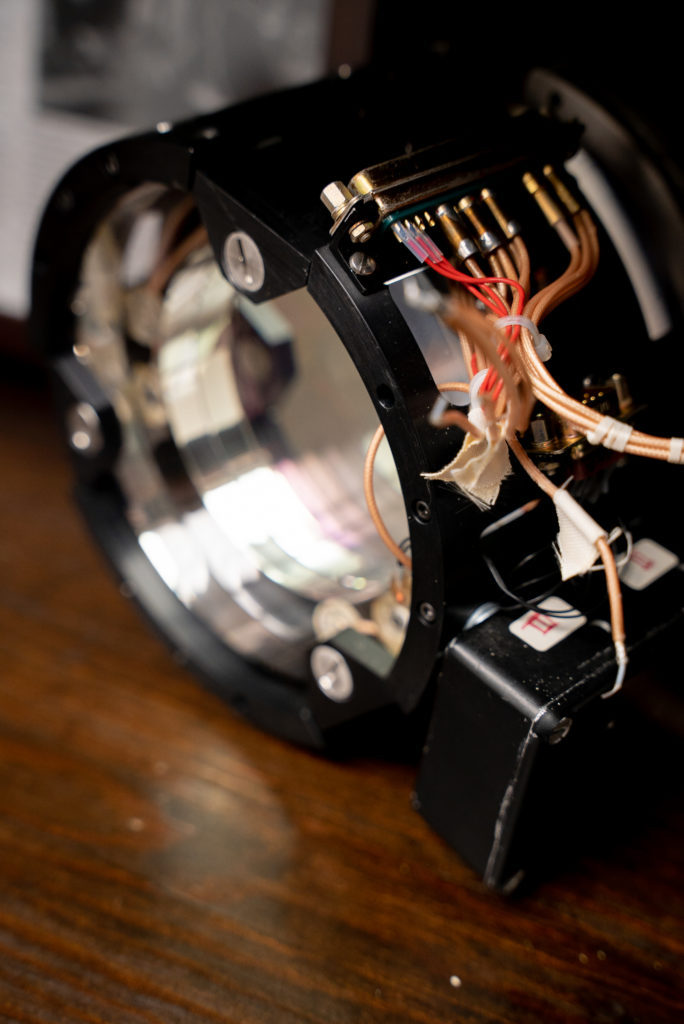
These patterns are something like a fingerprint—different kinds of molecules produce different interference patterns, and move either toward or away from the spacecraft, allowing them to be identified.
The findings: TIDI and HRDI data gave researchers the first long-term look at seasonal wind variations across the globe.
They collected information for nearly two full decades and continue that work today. From its vantage point in high inclination orbit, TIDI wind velocity measurements helped pull back the curtain on the daily, seasonal, and long-term changes in atmospheric waves.
The atmospheric data collected over the years led to improvements in our predictive models for weather and climate. TIDI and HRDI’s examination of the area of the atmosphere between the mesosphere and lower thermosphere was the first mission in NASA’s Solar Terrestrial Program—designed to understand the interaction between the sun and our protective atmosphere and magnetic field.
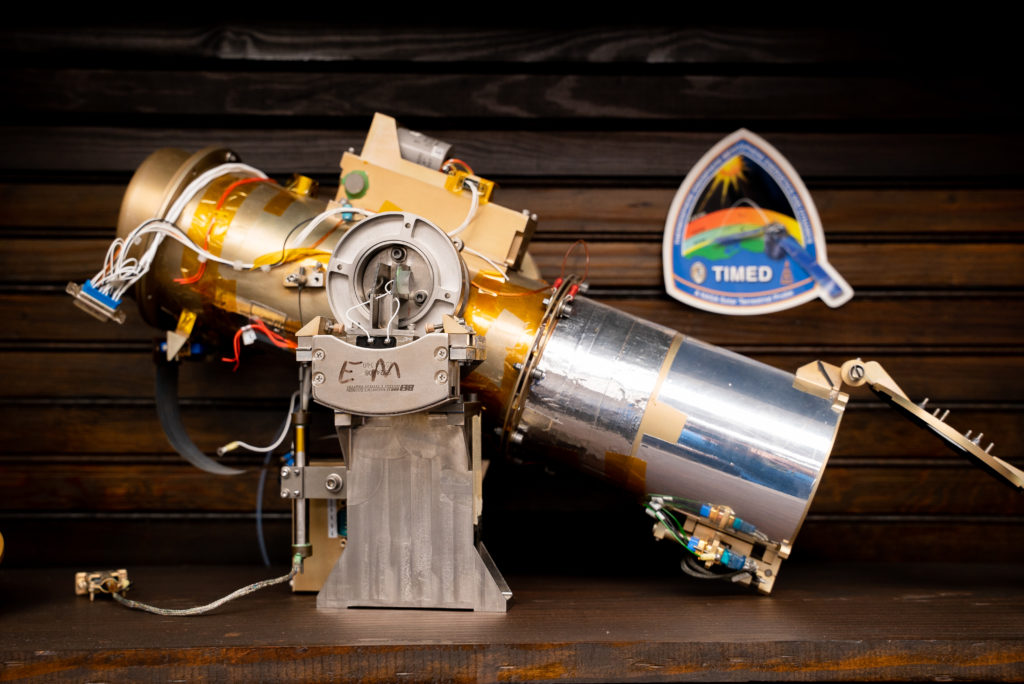
1990s
Setting the scene
Following the 1986 Challenger disaster, NASA pushes forward with the shuttle program. Discovery launches in 1990, delivering the Hubble Space Telescope into orbit. Subsequent launches ferry parts into space for construction of the International Space Station.
At SPRL, researchers are tackling several questions having to do with spacecraft operation. In particular, U-M researchers are looking at space plasmas and if they can be used to create the thrust for changing satellite orbits instead of using traditional fuels.
The instrument: The Tethered Satellite System (TSS)
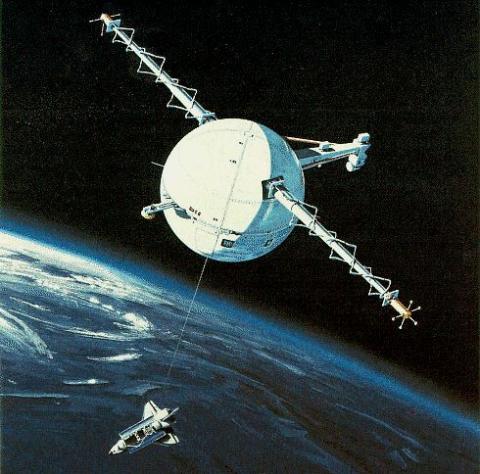
The idea was to release and control small satellites from the shuttle, or a larger satellite, that were connected via a long tether. By doing so, a mission could directly collect data from more locations than just the spacecraft’s orbit. In addition, researchers had hoped the tether itself would help generate power for the spacecraft and satellite to maneuver.
At SPRL, researchers worked on the tether itself and the ways thrust could be generated on the smaller satellite. NASA and the Italian Space Agency had targeted the ionosphere for study—a region of the upper atmosphere filled with charged particles.
An extended tether moving through the Earth’s magnetic field, it was believed, would eventually create electrical current from the potential difference between its two ends.
The findings: The system launched for the first time as part of the TSS-1 mission on June 6, 1992 aboard the shuttle Atlantis. The tether stuck twice during deployment, limiting the satellite’s distance from the shuttle to 840 feet. It had been designed to extend as far away as 60,000 feet.
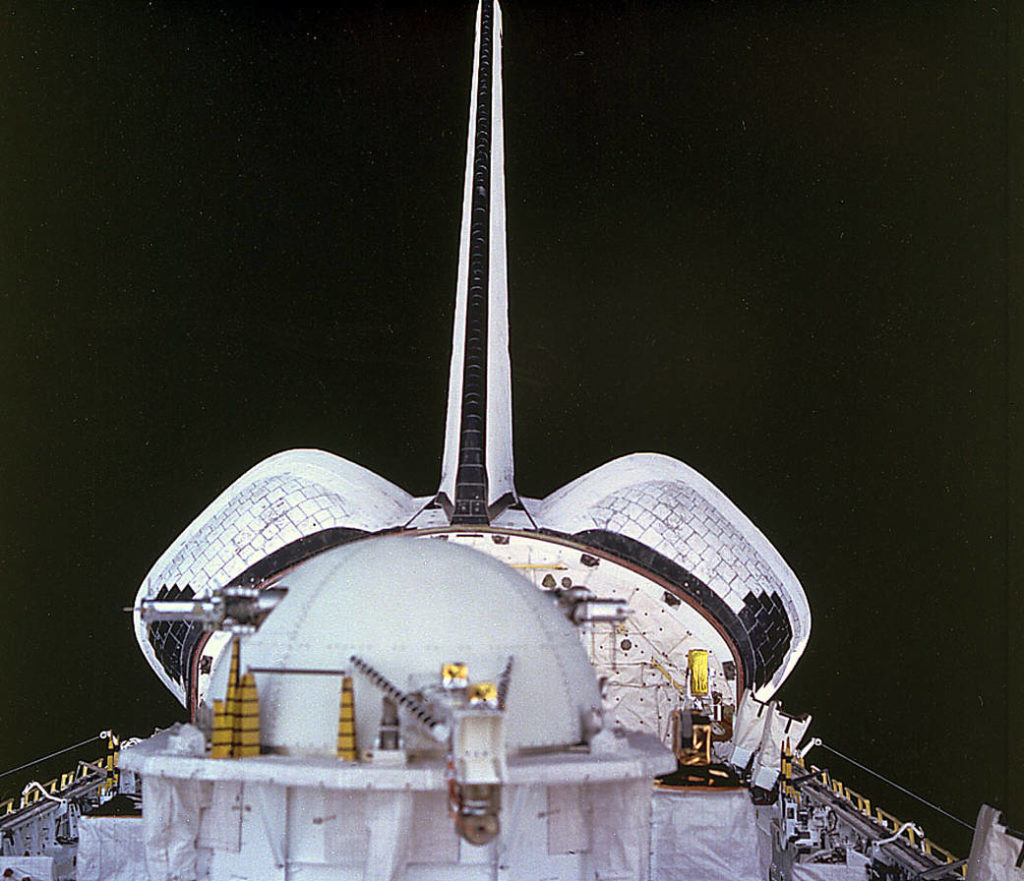
A follow-up mission, something of a second chance for the NASA/Italian Space Agency project, launched four years later and also encountered difficulties. The system deployed as planned, but the tether snapped after about five hours.
Even with the pair of shortened missions, the launches helped U-M engineers establish gravity gradient stabilization as an effective way to fix a smaller satellite’s positioning. By moving through the Earth’s magnetic field, the extended tether was able to pick up enough electrical charge to power the smaller satellite.
The findings showed energy generation of up to 3.5 kilowatts during the shortened tests, revealing the potential for even greater power generation under optimal circumstances and clearing the way for additional tethered satellite missions.
2000s
Setting the scene
NASA loses Space Shuttle Columbia in 2003, roughly a decade and a half after the loss of Challenger. Despite the setback, and the formation of a private company called SpaceX in 2002, space exploration is largely still the province of government agencies like NASA.
At SPRL, years of attention to Earth and its upper atmosphere are giving way to a focus on other planets and as one example particular interest answering questions about Mercury. SPRL instrumentation provides the first measure of ions in the atmosphere of the least-explored terrestrial planet in our galaxy.
The instrument: The Fast Imaging Plasma Spectrometer (FIPS)
Since Mariner 10 made a pair of flybys in the mid-1970s, NASA had wanted a closer look at Mercury. And in 1999, agency officials approved the MErcury Surface, Space ENvironment, GEochemistry and Ranging (MESSENGER) mission to make it happen.
MESSENGER launched in August, 2004 with seven scientific instruments aboard, including FIPS, created at SPRL. To understand the makeup of Mercury’s upper atmosphere, the instrument collected charged particles in an entrance system the size of a soda can.
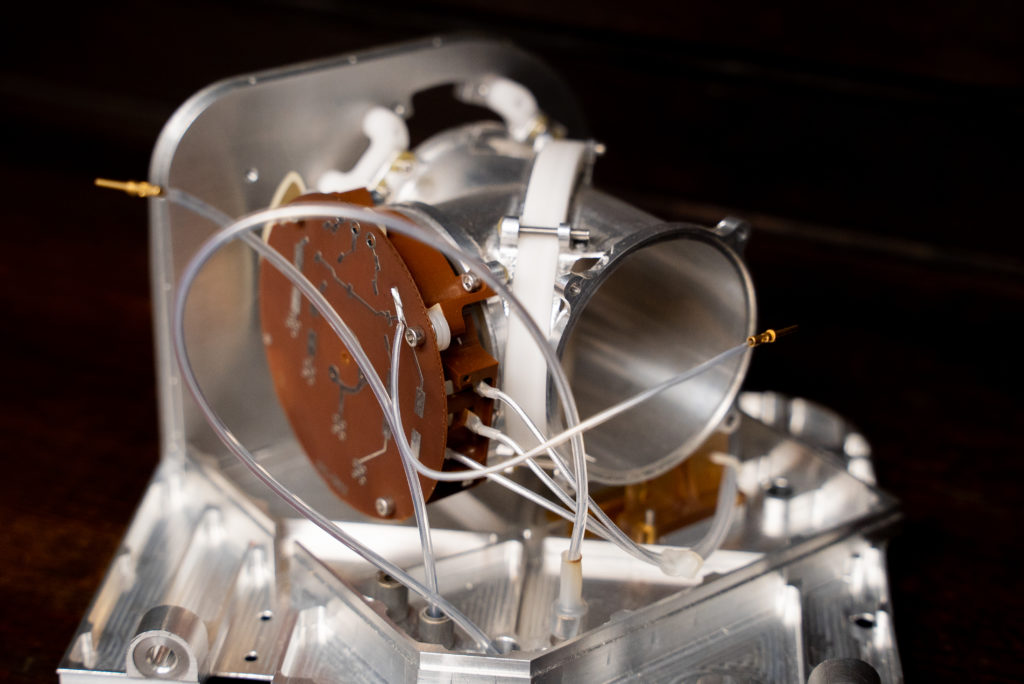
FIPS then filtered the ions through an electrostatic analyzer. An electric field pushed the ions into a chamber where detectors measured how fast they moved using start and stop plates. Different particle types move at different speeds, allowing FIPS to identify them by flight time. The result was a highly accurate determination of specific ions and their energies.
“SPRL engineers and technicians designed and fabricated the precision electronics and packaging that made it all possible,” McNally said. “The instrument operated successfully for over 4 years in orbit around Mercury.”
The findings: MESSENGER’s work provided a wealth of new data about the innermost planet and the first real understanding of what is happening there. FIPS helped scientists understand what makes up Mercury’s atmosphere, and where that atmosphere comes from. Turns out it’s mostly sodium and oxygen atoms that the solar wind “sandblasted” from the planet’s poles.
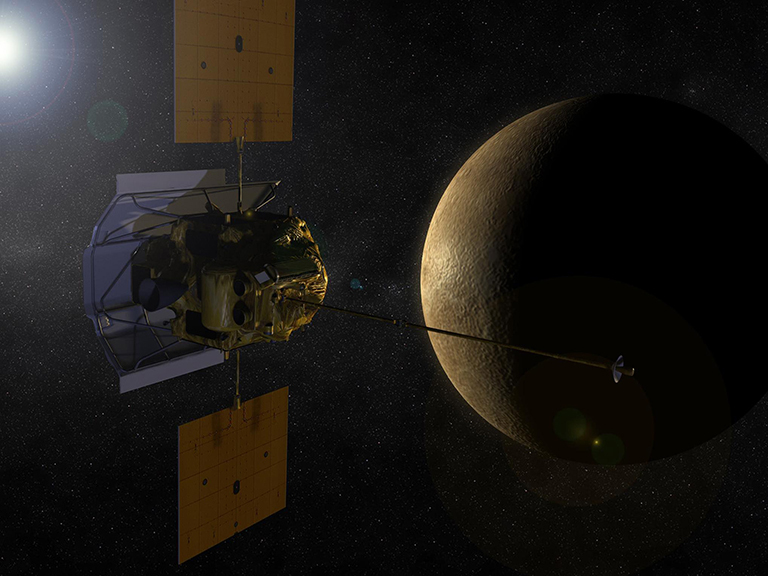
But the instrument also gave the first hints that the planet’s magnetic field is powerful enough to deflect some of the impacts of the solar winds, which are intense so close to the sun.
As Zurbuchen noted in Science Daily in 2008: “From our magnetic measurements, we can tell that Mercury is managing to stand up to a lot of the solar wind and protect the surface of the planet, at least in some spots… Mercury’s magnetosphere is more similar to Earth’s than we might have thought.”
Knowledge gleaned from the creation of FIPS influenced the development of other instruments, including Solar Orbiter’s Heavy Ion Sensor, which is now making direct measurements of the solar wind.
2010s
Setting the scene
NASA is ending its space shuttle program. The Curiosity rover lands on Mars and begins its search for signs of past and present life. Mars is a main focus during this stretch for NASA as well as the burgeoning private space sector.
But at SPRL, some of the most important work is putting the focus back on Earth, as researchers tackle the question of how best to understand hurricane intensities as they threaten populated coastal locations.
The instrument: The CYGNSS Delay Doppler Mapping Instrument
In 2012, NASA tapped U-M and principal investigator Chris Ruf to create a group of eight micro-satellites that could look down from space at what was happening inside hurricanes at the ocean’s surface. The project was named the Cyclone Global Navigation Satellite System (CYGNSS) and launched in December 2016.
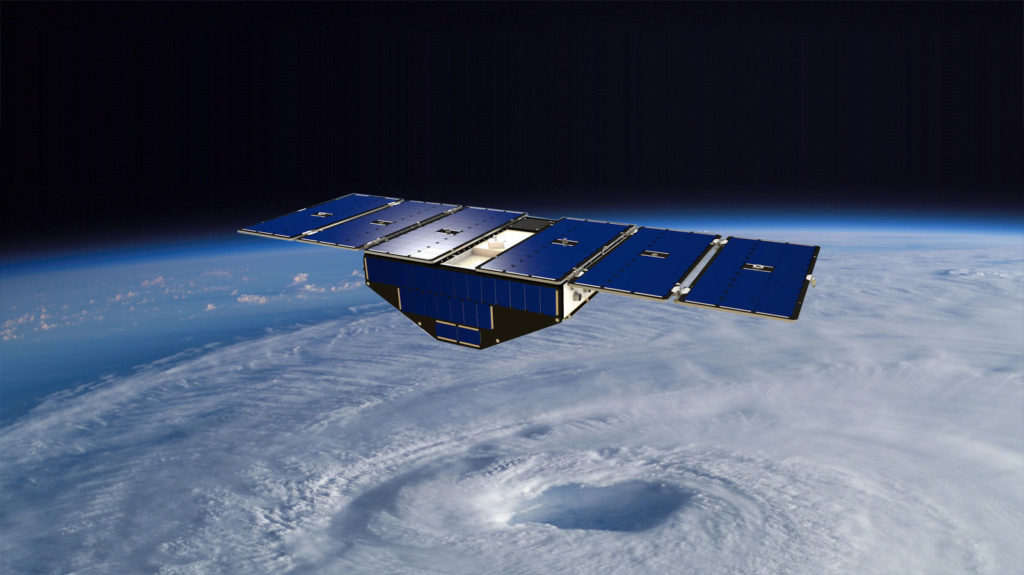
By utilizing GPS signals, which are not flustered by rain and clouds, the satellites are able to peer through extreme weather to measure surface wind speeds. Antennas on the observatories collect GPS data directly from GPS satellites, as well as reflected data that bounces back from the ocean surface. Complex data processing, built into efficient software algorithms developed by SPRL programmers, convert the data into calibrated and corrected wave height and surface wind data.
Because of their arrangement and number, the observatories can measure the same spot on the globe much more often than typical weather satellites.
“When a hurricane is first starting to develop, it goes through a brief period called rapid intensification where it will transition from a tropical depression or tropical storm into a major storm,” said Ruf, a former SPRL director and the U-M Frederick Bartman Collegiate Professor of Climate and Space Science. “A category three, four or five hurricane typically emerges over just a 24 to 36 hour period. With traditional satellites, you’ll very often miss that rapid intensification phase because they only come back around to the same spot for a few days.”
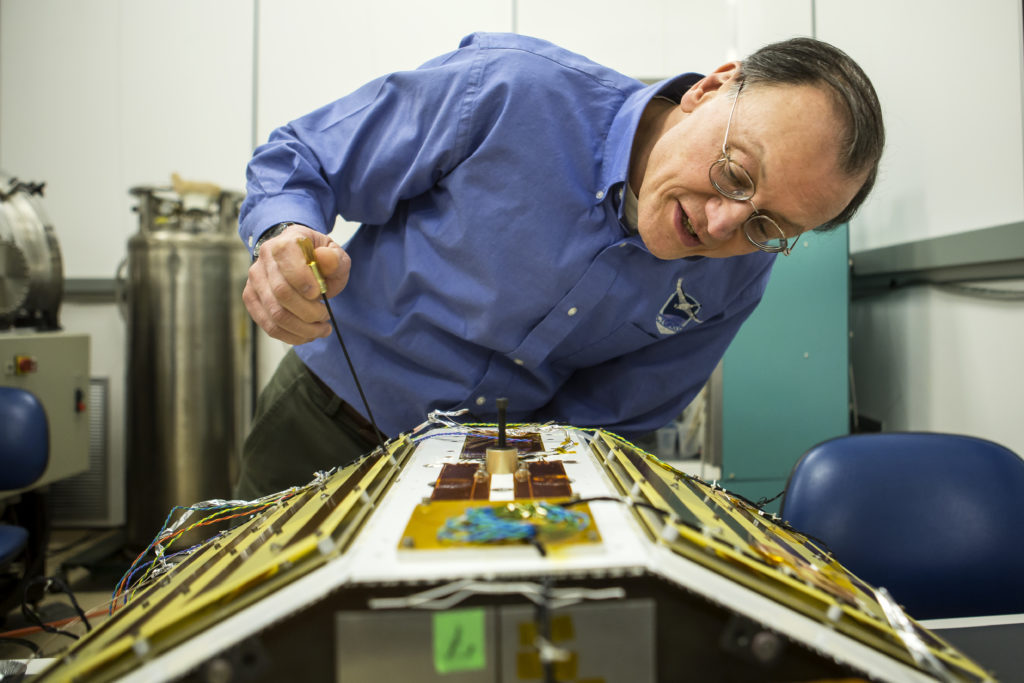
CYGNSS’s revisit time averages between four and six hours, and at times, it can be as fast as 12 minutes.
The findings: Adding CYGNSS data to NOAA’s test hurricane modeler was shown to improve track, intensity, and structure forecasts for hurricanes Harvey and Irma, demonstrating its potential to improve forecasts of future hurricanes. It can also better locate a hurricane’s eye.
As a relatively new addition to the forecasting arsenal, the satellite data has not yet been used directly, but has been used in re-analysis forecasting—revisiting old hurricane forecasts with new CYGNSS data to see how predictions could have been improved.
It has also shown promise in land-based applications that include studying soil moisture in areas threatened by locust storms and imaging inland flooding in regions hit by hurricanes.
In October, NASA announced it would extend CYGNSS’ mission through Sept. 2023.
“Our ability to forecast the strengthening of hurricanes has been improved by CYGNSS measurements of their inner core winds, which allow us to track the transfer of energy from the warm ocean water into the atmosphere in the form of latent heat flux,” Ruf said. “We are very excited about what the next three years will bring.”
2020s
The start of this decade has been marred by the arrival of COVID-19, but the work continues. In Feb. 2020, however, just prior to the declaration of a pandemic, U-M’s Lepri and Jim Raines, an associate research scientist saw Solar Orbiter launch from Cape Canaveral.
Orbiter’s mission is to connect activity on the sun with the solar plasma that flows out into the heliosphere and drives space weather. Aboard the spacecraft is the Heavy Ion Sensor, partially developed by Lepri and Raines.
It’s a kind of ion mass spectrometer that breaks down the composition of the solar wind it samples. U-M researchers have become recognized as leaders in understanding the sun’s activity. And it’s an area that will play a large role in SPRL’s efforts this decade.
But as Lepri takes the reins as SPRL’s new director, she sees the coming years as an opportunity for new directions and new partnerships. She intends to make collaboration a hallmark of her time at the helm.
“I think that the future is actually going to be more varied,” Lepri said. “I see projects coming down the line that are in all of these different arenas.
“We have partnerships with aerospace engineering and astronomy and nuclear engineering. And that broad range is great for students. They’re going to see all sorts of different opportunities and how their specialized engineering skills are going to open up opportunities in the future.”

